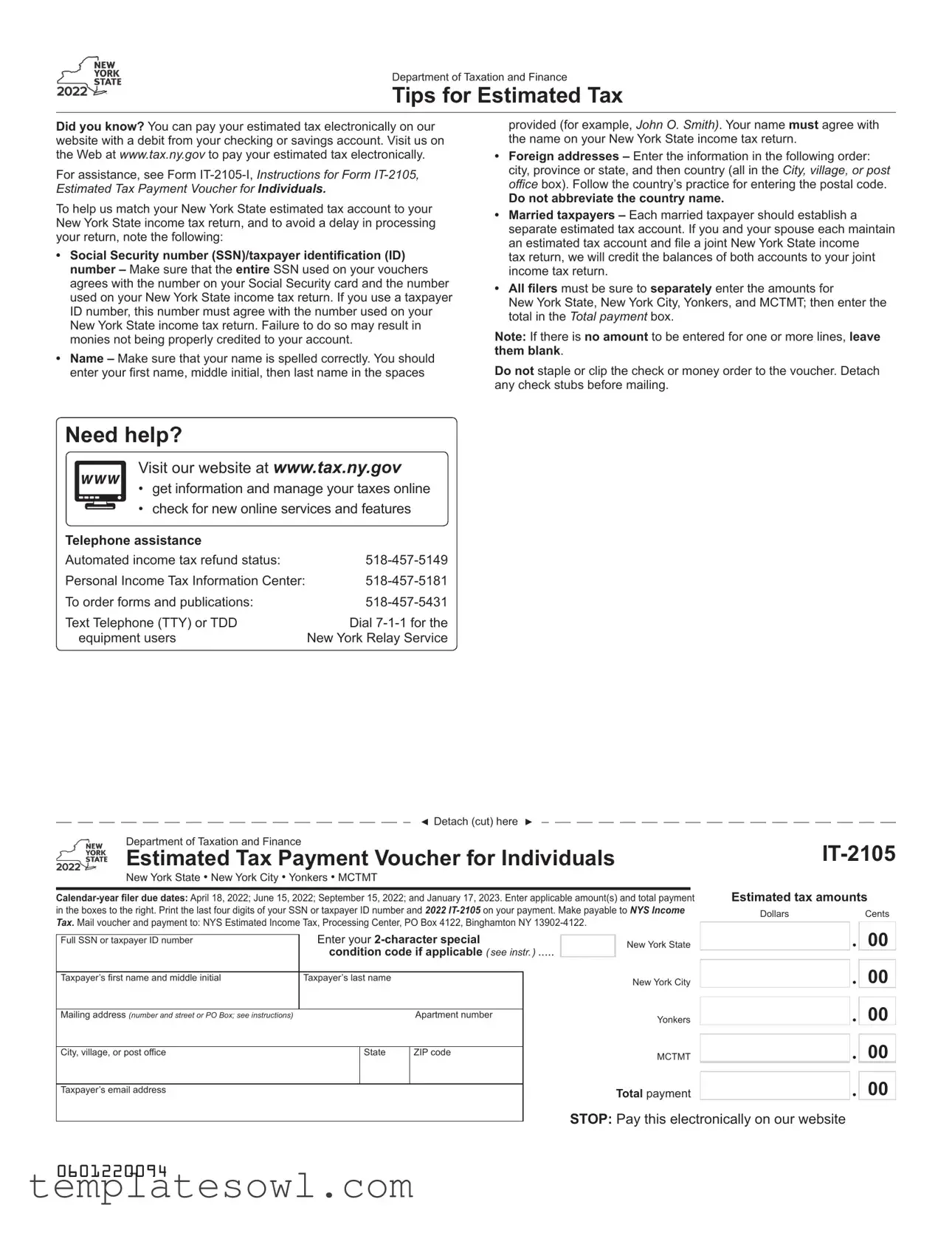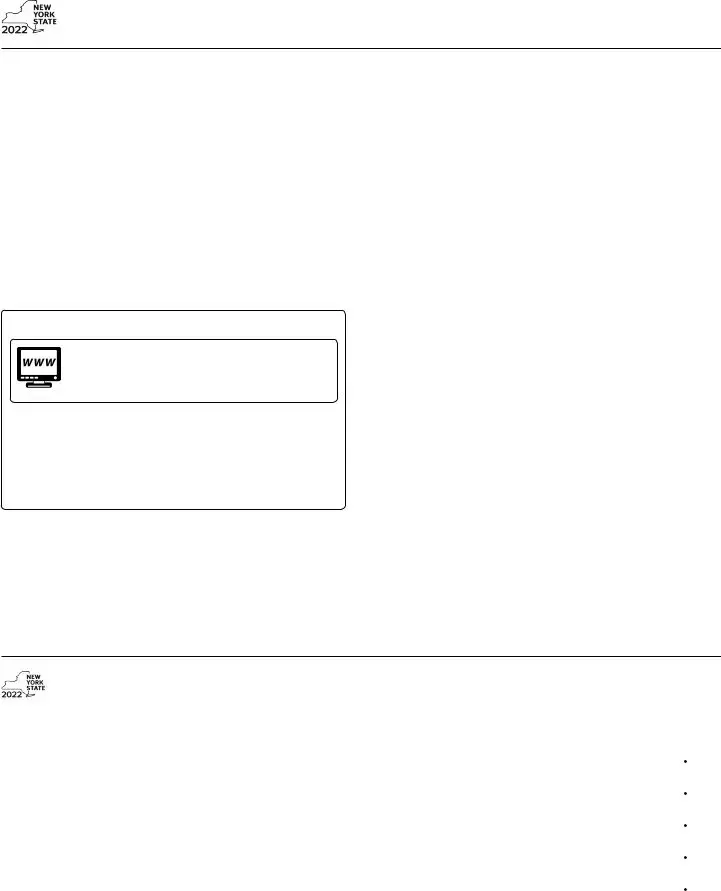What is Form IT-2105 and who needs to use it?
Form IT-2105 is the Estimated Tax Payment Voucher for Individuals in New York State. This form is primarily for individuals who anticipate owing $300 or more in tax for the current year after accounting for withholding and credits. This might include self-employed individuals, freelancers, or those with additional income sources. By submitting this form, taxpayers make estimated tax payments to ensure that they meet their tax obligations and avoid penalties at year-end.
How do I properly fill out Form IT-2105?
Filling out Form IT-2105 correctly is essential for ensuring that your payment is processed without delays. Start by entering your complete Social Security number or taxpayer identification number. It must match the number on your tax return. Next, carefully print your name, ensuring it aligns with the name on your New York State income tax return. For foreign addresses, list the city, state or province, and country in that specific order. Married couples should apply for a separate estimated tax account, but can have both accounts credited to their joint tax return. Finally, provide the amounts for New York State, New York City, Yonkers, and MCTMT taxes in their designated sections before totaling your payment.
When are the due dates for submitting estimated tax payments?
For calendar-year filers, the due dates for submitting estimated tax payments using Form IT-2105 are as follows: April 18, June 15, September 15, and January 17 of the following year. Each date corresponds to payment for specific quarters of the tax year, so it is important to be aware of these deadlines to avoid penalties for late payment.
Can I pay my estimated taxes electronically?
Yes, you can pay your estimated taxes electronically through the New York State Department of Taxation and Finance website. This convenient option allows you to make payments directly from your checking or savings account, ensuring that you meet the payment deadline easily. For guidance and to find more information about the electronic payment process, you can visit the New York State tax website at www.tax.ny.gov.

